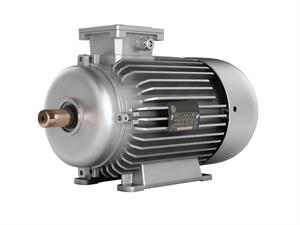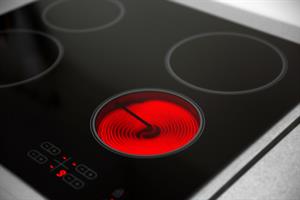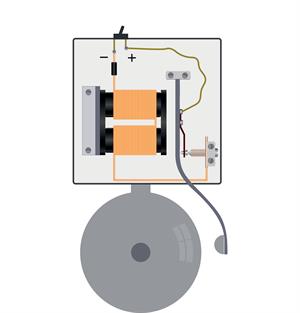PDF chapter test TRY NOW
Magnetic effect can be made with the help of electric current.
Electromagnet:
This experiment requires an iron nail, an insulated wire, few pins, a cell, and a switch.

Experimental set-up
- Take an iron nail of \(6\)\(–10\) \(cm\) long and a flexible plastic wire (or any insulated wire) of length \(75\ cm\) long.
- Wound the wire tightly around the iron nail like a coil.
- Now, connect the ends of the wire to the cell through a switch and place the pins near the end of the nail.
- When the current is switched on, the pins clung to the tip of the nail.
- But when the current is turned off, the pins do not stick to the tip of the nail.
Important!
Do not pass the current for a long time because the electromagnet weakens the cell if it is left connected.
Inference:
When the current flows through the circuit, the coil behaves like a magnet. Whereas the coil loses its magnetism when the current is turned off. This type of coil is known as electromagnets. It is a type in which magnetic field is produced by an electric current.
Example:

Loudspeaker

Electric motor

Induction plate
Uses of electromagnets:
1. Electromagnets are so strong that it is used to lift heavy loads. In a junkyard, a crane attached to an electromagnet is used to carry heavy metal loads. It also helps to separate magnetic materials from the junk.

Junkyard crane
2. Tiny electromagnets are used by the doctors to remove small pieces of magnets from the eye.

Electromagnets used in the eye surgery
3. Even children playing with the toys and dolls have electromagnets in it.

Magnetic toys
Electric bell:
A good example of an electromagnet is an electric bell. It consists of a coil of wire, an iron piece, a hammer, and a contact screw.

Working:
- The iron piece is wounded with a coil of wire, which acts as an electromagnet.
- The hammer at the end of an iron strip is placed near an electromagnet.
- A contact screw is placed near the iron strip so that when it is in contact with the screw, current flows through it.
- Thus, the coil becomes an electromagnet and pulls the iron strip.
- When the iron strip is pulled, the hammer at the end of the strip strikes the gong of the bell, and sound is produced.
- The circuit breaks, and the current flow is stopped when the electromagnet (coil) pulls the iron strip.
- In this case, the coil is no longer an electromagnet, and hence, it does not attract the iron strip.
- Again, the iron strip touches the contact screw when it reaches its original position. This completes the circuit of the electric bell.
- Once again, the hammer strikes the gong when the current flows in the coil.
- Every time when the circuit is completed, the hammer strikes the gong.
- This process is repeated again and again and makes the bell ring.
